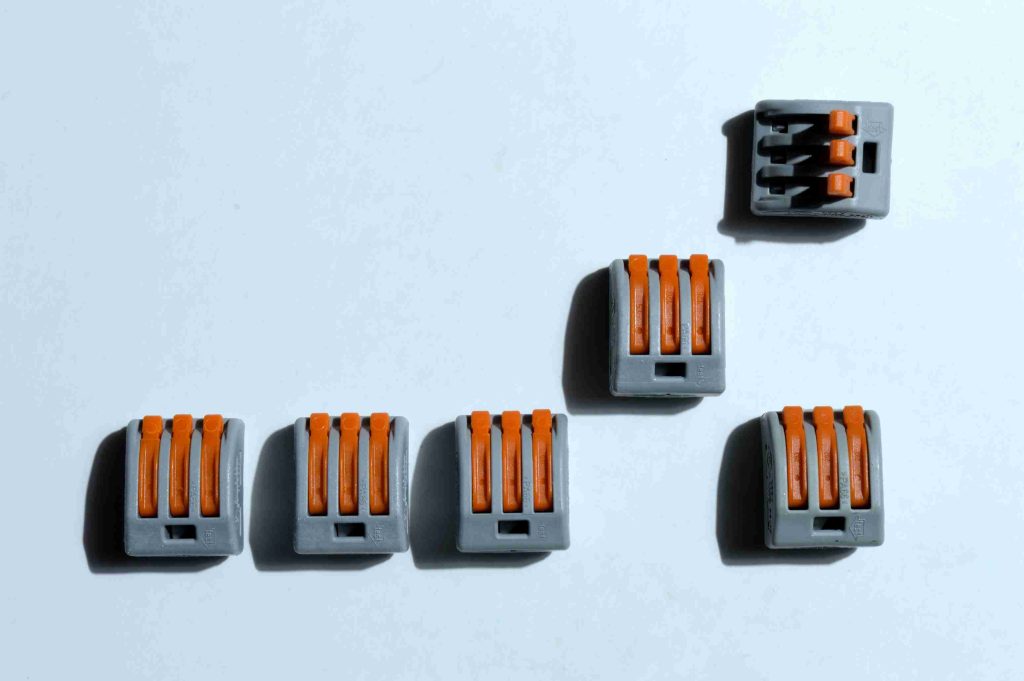A single flaw may cause big problems in the electrical engineering business where a system relies on flawless energy transfer. The smallest misalignment, an off-surfaced face, or a poorly bonded interface may not be visible to the naked eye, however, in a high-voltage system, imperfection can hinder performance, safety, and durability.
What is surprising is the extent to which such reliability is dependent on what transpires way before the first electron is flowing what transpires during manufacturing. In particular, the quality of high-precision mold parts plays a silent yet critical role in ensuring the performance of a component as vital as a high-voltage connector.
At first sight, these two aspects, mold accuracy and connector safety, may seem to be far away. Collectively however, they are the basis of the present-day energy systems, including electric vehicles and aerospace power modules.
The Role of High-Precision Mold Parts in Modern Manufacturing:
High-precision mold parts are specialized tooling components used in injection molding processes to create plastic or metal parts with extremely tight tolerances. Such molds should be designed to precise dimensions, frequently in the micron range, so that the parts that they mold have perfect and precise features, are the same size, and have no defects on their surface.
This accuracy is essential in sectors that require uniformity and strength of structure- automotive, medical equipment, telecommunication and electronics production. In numerous instances, the end result of the item produced largely relies on virtually the purity of the mold it is created by.
The above mold components are cavities, cores, sliders, lifters, and ejectors and each of them should be produced by the use of high-technology CNC machineries, EDM machines and high-quality tool steels. The quality of the components they assist in the production of will be directly affected by their surface finish, dimensional accuracy and alignment.
With the further trend toward further miniaturization the need has grown to provide even finer tolerances and more complex mold shapes. And there is no place where this is more important than in the manufacture of electrical parts which have to work at high voltages in harsh operating environments.
What Are High-Voltage Connectors and Why Do They Matter?
A high-voltage connector is a specialized component designed to transmit large amounts of electrical energy safely and reliably between systems. They have many applications including in electric vehicles, wind turbines, power grid, industrial automation and medical imaging equipment.

High-voltage connectors, in contrast to the regular ones, have to deal with much more issues. They must:
- Withstand high electric fields without dielectric breakdown
- Maintain tight electrical contact over long periods
- Resist moisture, vibration, heat, and chemical exposure
- Meet rigorous safety and compliance standards (e.g., IEC, UL, RoHS)
Typical high-voltage connectors feature insulating housings, sealing gaskets, locking mechanisms, and conductive terminals. Their internal geometry is complex and demands that every part must be produced with unsurpassed precision.
Misaligning the plastic housing by an amount as small as a fraction of a millimeter can lead to some kind of a partial discharge, overheating, or failure to insulate which is not admissible in a mission-critical environment.
The Hidden Link: How Mold Precision Impacts Connector Performance?
At the core of every high-voltage connector is a series of components—casings, shells, sleeves, insulators—all of which are produced through injection molding. This is where high-precision mold parts come in.
The mold cavities are also to be cut to precise standards so that the parts so molded fit together with perfect airtightness. The tiniest imperfection in a mold insert may be converted into an uneven wall thickness, a surface pinhole or a small warp in the finished part. Such imperfections are cosmetic in low-voltage applications, but failure points in high-voltage applications.
Take a connector housing that is intended to guard and insulate a live conductor. In case there is imprecise molding of the housing and hence inconsistent thickness, it might not be able to withstand the rated dielectric strength. In severe situations, there can be arcing or thermal damages.
Also connector designs usually have ribs, channels and sealing grooves and these all must be machined into the mold with amazing precision. The use of high-precision mold parts ensures that each molded component maintains structural consistency, dimensional repeatability, and mechanical reliability.
Material Science and Miniaturization in Electrical Component Design
Modern high-voltage connectors are no longer the bulky, rugged enclosures of the past. They are now smaller, weightless, and in many cases specialized on high-density power transmission. This is due to the improvement in material science and molding technology, which is a large part of this evolution.
Connector housings are typically made of thermoplastics such as PBT, PPS, LCP and flame-retardant or UV stabilizing additives, high performance polymer. The materials have the special attribute of insulation, heat resistance and mechanical strength.
However, sufficient mold engineering is necessary to mold these materials into tight and detailed geometries. The high-precision mold parts must be built to maintain temperature control, ensure uniform flow of molten material, and minimize shrinkage or warping during cooling.
The less space there is the smaller the margin of error. This is the reason why today manufacturers use multi-cavity molds, micro-molding processes and ultra-fine EDM machining; all these processes are facilitated by precision tooling.
Challenges and Innovations in Connector Manufacturing:
Manufacturing high-voltage connectors comes with its own set of challenges. These include:
- Avoiding flash (excess material at the parting line), which can interfere with electrical insulation
- Preventing air traps, which weaken structural integrity
- Achieving perfect alignment of multiple molded components in hybrid assemblies
- Maintaining repeatability across thousands or millions of units
Manufacturers are resorting to the use of sophisticated mold design in order to cope with these demands, such as insert molding (where metal items are coated with plastic), overmolding (to create a series of layers), and rotational mold to align in such a way that the sealing surfaces are not lost.
Digital technologies like AI-assisted mold monitoring, automated quality control systems, and digital twin simulations are also playing a role. These devices examine the tool wear, injection flow, and mold temperatures in the real-time, which further extends the capabilities of high-precision molds.
Conclusion:
Tooling is one of the most overlooked terms in electrical engineering. But who cares about the surface elements: the power cables, the terminals, the voltage ratings? But behind every reliable high-voltage connector is a series of unseen decisions—about tolerances, materials, and mold geometry.
High-precision mold parts are the unsung heroes of this equation. They make sure that all the insulators are tight, all the housings are air tight, and all connectors do not compromise, day in day out, in places where failure is not permissible..




